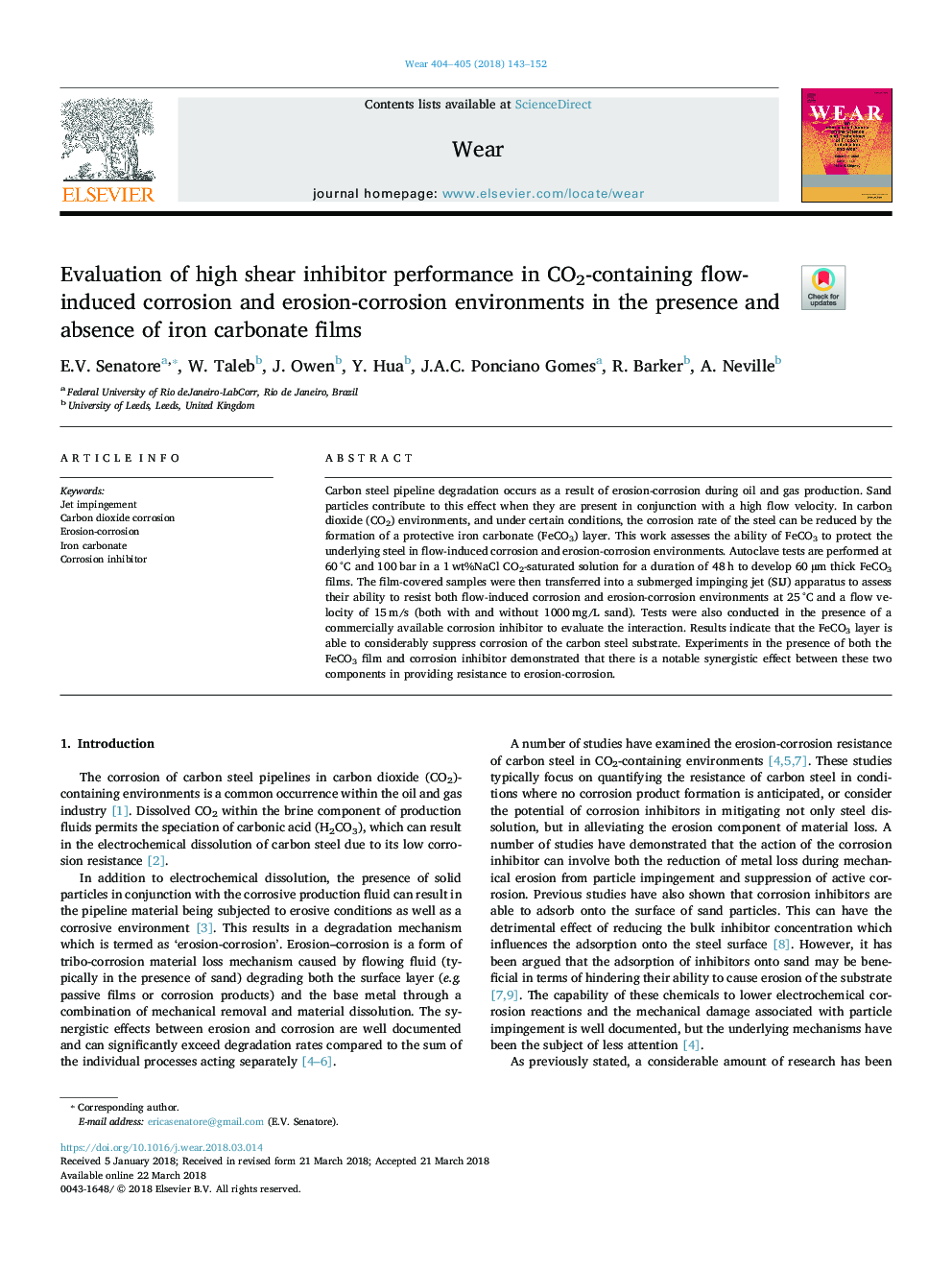| Article ID | Journal | Published Year | Pages | File Type |
|---|---|---|---|---|
| 7003903 | Wear | 2018 | 10 Pages |
Abstract
Carbon steel pipeline degradation occurs as a result of erosion-corrosion during oil and gas production. Sand particles contribute to this effect when they are present in conjunction with a high flow velocity. In carbon dioxide (CO2) environments, and under certain conditions, the corrosion rate of the steel can be reduced by the formation of a protective iron carbonate (FeCO3) layer. This work assesses the ability of FeCO3 to protect the underlying steel in flow-induced corrosion and erosion-corrosion environments. Autoclave tests are performed at 60â¯Â°C and 100â¯bar in a 1â¯wt%NaCl CO2-saturated solution for a duration of 48â¯h to develop 60â¯Âµm thick FeCO3 films. The film-covered samples were then transferred into a submerged impinging jet (SIJ) apparatus to assess their ability to resist both flow-induced corrosion and erosion-corrosion environments at 25â¯Â°C and a flow velocity of 15â¯m/s (both with and without 1000â¯mg/L sand). Tests were also conducted in the presence of a commercially available corrosion inhibitor to evaluate the interaction. Results indicate that the FeCO3 layer is able to considerably suppress corrosion of the carbon steel substrate. Experiments in the presence of both the FeCO3 film and corrosion inhibitor demonstrated that there is a notable synergistic effect between these two components in providing resistance to erosion-corrosion.
Related Topics
Physical Sciences and Engineering
Chemical Engineering
Colloid and Surface Chemistry
Authors
E.V. Senatore, W. Taleb, J. Owen, Y. Hua, J.A.C. Ponciano Gomes, R. Barker, A. Neville,
